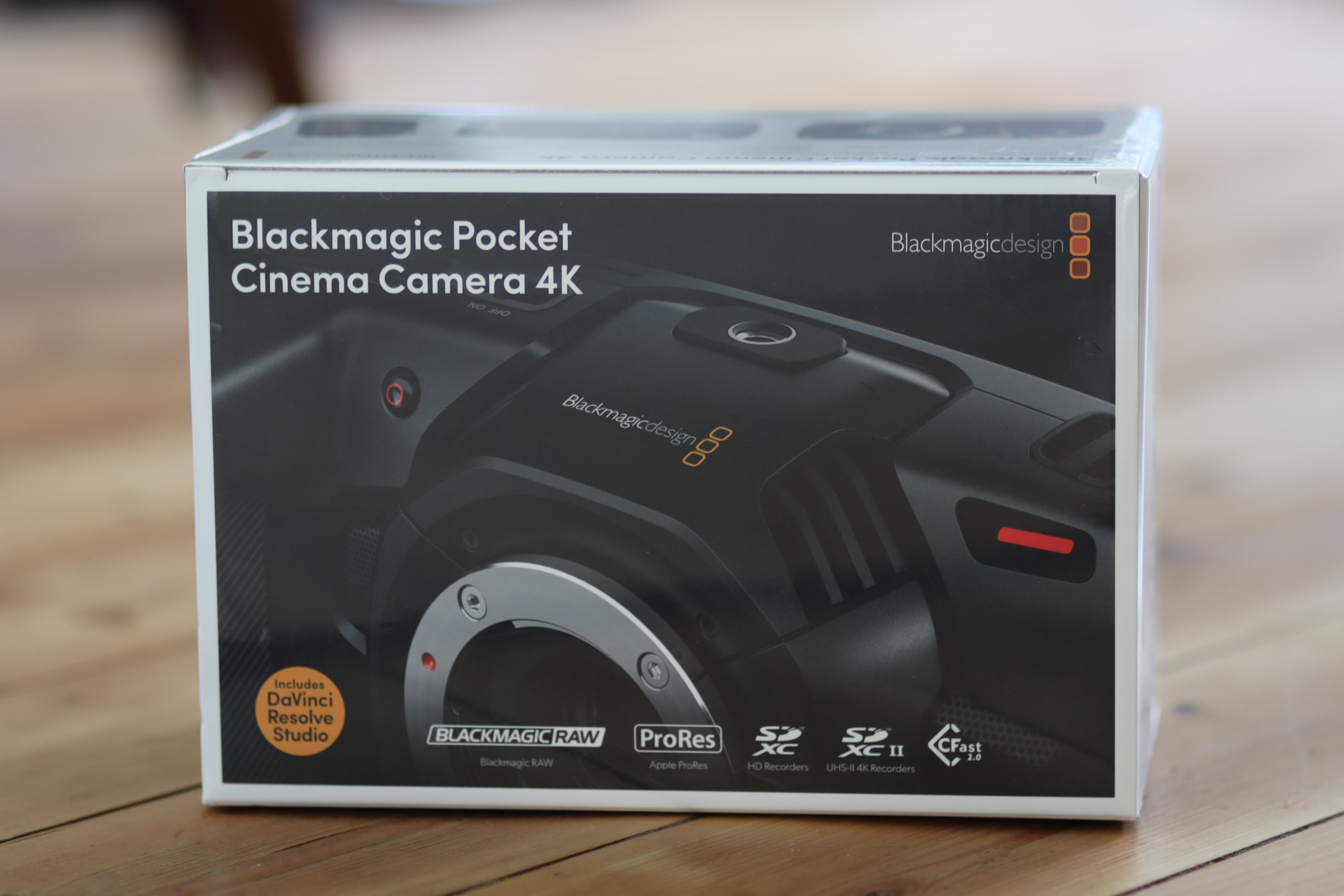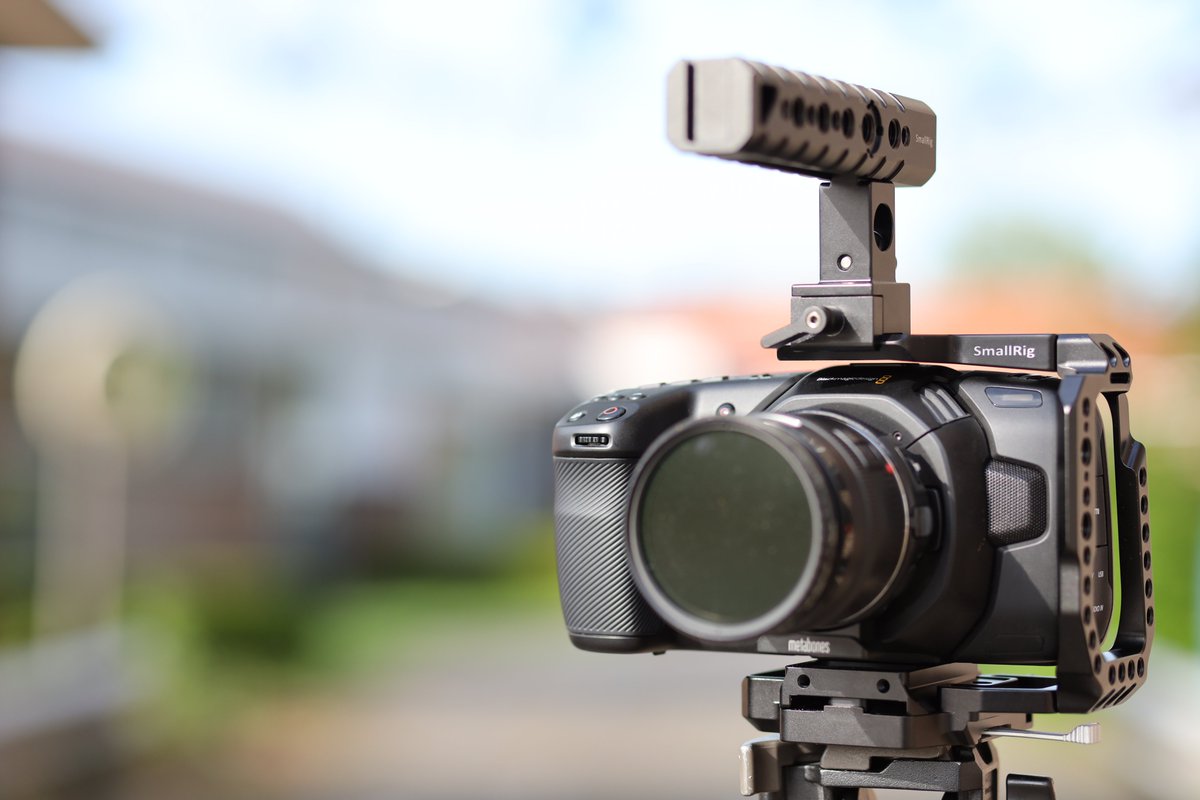Like most Blackmagic cameras, the Blackmagic Pocket Cinema Camera 4K (BMPCC4K) is a little weird: it looks like a DLSR but doesn't do photos. It has a giant screen but small batteries to power it. It feels like a toy, but records RAW video. The BMPCC4K is a quirky contraption at times, but once you've seen the images it produces, you forget about all of that.
The BMPCC4K puts the image-quality, tools and flexibility previously reserved for cameras costing 10 times as much into the hands of many talented frugal filmmakers. In that sense, the introduction of the Pocket 4K is just as significant for filmmakers as the Canon 5D was 10 years earlier. Let’s dive in.
 Pocket Box
Pocket Box
The (very) good stuff
Dedicated film camera
Unlike other camera brands, Blackmagic doesn’t have to cater for photographers, and this has some massive advantages for filmmakers. To name just a few: the low megapixel count (8MP) leads to much better low-light performance, heat sinks are in place for internal recording up to 12 bit raw, the user-interface and button layout are tuned for video work, and the four-thirds mount makes the camera adaptable to all sorts of cinema lenses, speed boosters and ND-throttles.
And Blackmagic isn’t really protecting their higher end line-up either: slap on a speedbooster and the BMPCC4K gets you 90% of the URSA Mini Pro, with much better low-light performance, a better screen and easier lens-adaptability and portability to boot. Actually, the Ursa Mini Pro and Pocket 4K share the same color science which makes it the perfect B-cam to the UMP.
10 bit ProRes & 12 bit RAW internal recording
Where hybrid cameras costing twice as much require you to fiddle with external recorders just to squeeze some measly 10bit 420 out, the Pocket 4K offers internal 10 bit 422 ProRes and 12 bit RAW recording. No holds barred. If you’re used to the standard 10/11 stops of dynamic range of most mirrorless cameras, you’ll immediately notice the increased latitude offered by the 13 stops of dynamic range on the Pocket 4K.
 The BMPCC4K with the Smallrig half cage and handle
The BMPCC4K with the Smallrig half cage and handle
Dual Native ISO
Another big draw is the Pocket’s Dual Native ISO. Where the URSA struggles with anything over ISO 800, the Pocket's optimal high ISO performance doesn't even start until ISO 3200! If you set your camera to an ISO between ISO 100 and ISO 1000, the camera uses the first native ISO of 400, and once you set it to ISO 1250 or above, the camera automatically switches to the second native ISO of 3200. This means that ISO 1000 is noisier than ISO 1250. You do lose some dynamic range in the second ISO range, but that's an easy trade-off in most cases.
4K/60fps
Slow motion needs lots of light, and thanks to that Dual Native ISO, the BMPCC4K could well be the first viable option for low-light 4K slow-motion! Thanks to the robust codec and the performance of the Dual Native ISO you can easily shoot great-looking slow-motion footage at ISO 3200 or even higher! Overall, I found that there’s no noticeable effect on image quality if you shoots 50/60fps compared to shooting 25/30fps. And unlike most of the competition, sound is also recorded while shooting slow-motion.
What’s more: thanks to the ability to set a shutter angle instead of shutter-speed, ánd thanks to the dedicated slow-motion button on the back, switching between real-time and slow-motion is very fast! No need to double the shutter-speed manually, just press the slow-motion button and shoot!
Adaptability
Some might lament Blackmagic’s choice to go for a Micro Four Thirds (MFT) sensor, but I think it’s the only way they could offer all these features at such a low price. Once you go bigger, you need faster processors, which in turn need more cooling. It is no coincidence that the only companies that currently offer internal 10 bit 4K use smaller sensors (Panasonic and Fuji), and why we see so many innovations happening on the MFT platform first.
Another often overlooked advantage of MFT, is its adaptability: because of its short flange distance and small lens mount, nearly every lens in existence can be adapted to MFT. This allows you to use all sorts of vintage manual lenses. Stick a speedbooster in front, and suddenly that tiny sensor has the field-of-view and depth-of-field of an APS-C or full-frame sensor.
Connection galore
Blackmagic didn’t skimp on connections either. Besides SD- and CFast-card slots, you can record straight to an SSD-drive using the built-in USB-C connector. Plug your condenser mics into the Pocket 4K to get phantom-powered XLR, without the need for an XLR box. There’s a full-size HDMI-socket, headphone jack, and the 3.5mm mic jack doubles as a timecode-in!
The not so good stuff
Although Blackmagic cameras have always been pushing the envelope, every new model also seems to feature a few questionable design choices. The Pocket 4K sadly is no exception to this rule: the battery life is very mediocre, the screen doesn’t flip and is hard to see in direct sunlight, and balancing the thing on a gimbal can be a heart breaking experience. Luckily many avid users and manufacturers have already come up with smart solutions to many of these issues. I’ve outlined some of those issues and solutions in a separate article.
Conclusion
Although the Blackmagic Pocket Cinema Camera 4K eats through batteries like crazy, has an awkward fixed screen at times, and looks more like a spaceship than an actual cinema camera; once you see the magical images it produces, those issues become small niggles. This small camera has the allure and flexibility of cinema cameras costing ten times as much. The release of the BMPCC4K might be one of those turning points (like the 5D was for large-sensor video) where things like 10/12 bit and RAW become democratized. Just the announcement of the Pocket 4K has already led other manufacturers to include 10 bit (Fuji and Canon) recording, and RAW recording (Nikon) within 6 months. Blackmagic keeps pushing the envelope, and the BMPCC4K is one of its finest cameras to date.
Related Products
Purchasing through these links helps the Filmkit site, thank you!

